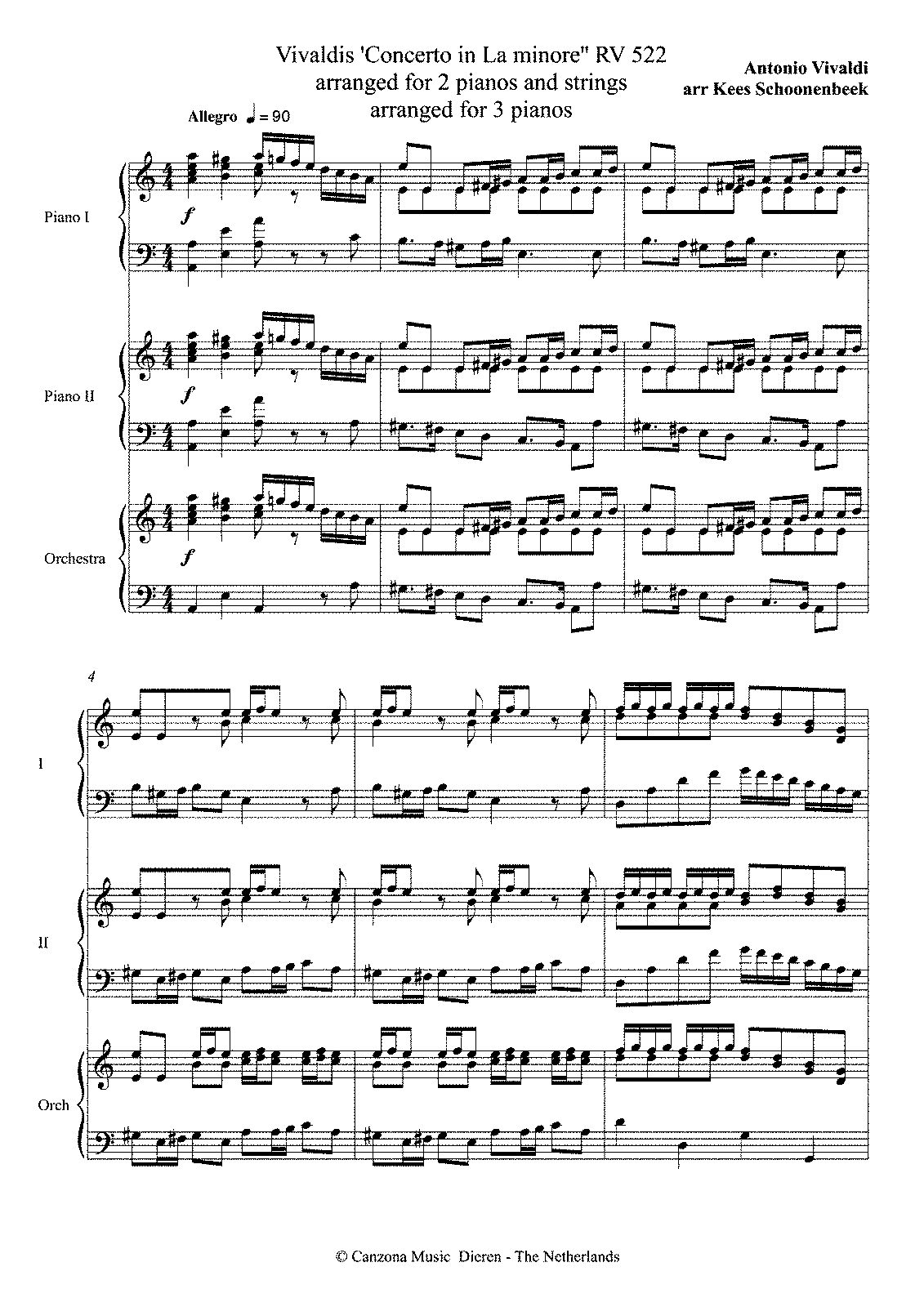

If Baroque concertos are missing some of the compositional elements we take for granted in Classical and Romantic concertos, that does not mean they are less sophisticated or less beautiful than those that came later in fact, the more monumental concertos of the 19th century are lacking in some of the elements that Bach and Vivaldi put into theirs. As the composer manipulates each movement’s elements - exposing more themes, developing them relationally through various key changes, and usually returning to the original key - we experience the architecture of the movement and the overall work. Even those of us without extensive musical training somehow know a key change when we hear it: on an intuitive level, we sense that a melody we’ve already heard is being repeated in a different scale. And Antonio Vivaldi, who was born in 1678 - seven years earlier than Bach - was the Baroque era’s prolific master of the concerto, composing virtually hundreds of them.īach demonstrated a universe of musical possibilities in his Well-Tempered Clavier, showing that composers could now modulate freely within individual works - a freedom that gave rise to the sonata allegro form we hear in later concertos and symphonies. When suites of movements began to emerge as “concertos” that contrasted smaller versus larger numbers of instruments playing together, Bach embraced this idea even as it was taking shape. It was first defined around 1680, just a few years before Bach was born - and Bach, always an enthusiastic adopter of new musical technologies, demonstrated complete mastery of this new tuning system as well as advances in the construction of instruments in every choir of the orchestra.

Take, for example, the well-tempered system of tuning, which enabled composers to modulate freely and compose in any key. In just a few more generations, in the Classical era, it would seem as if these developments had always been there. Instruments were becoming more advanced, opening new possibilities in range, volume and texture informal conventions of musical structure began to coalesce into forms that became the foundations of now-familiar musical classifications. In the early 18th century, musical knowledge was exploding in a way we could compare to digital technology today. But exactly three hundred years ago, the great Baroque masters Antonio Vivaldi and Johann Sebastian Bach were making history in a way that, though worth celebrating, is rarely marked on a calendar: They had reached full maturity as composers at a time when music was changing rapidly, and they were part of the reason it was changing. Birth dates are celebrated, and the deaths are remembered in thoughtful contemplation. Music historians rarely miss an opportunity to take note of an anniversary.


 0 kommentar(er)
0 kommentar(er)
